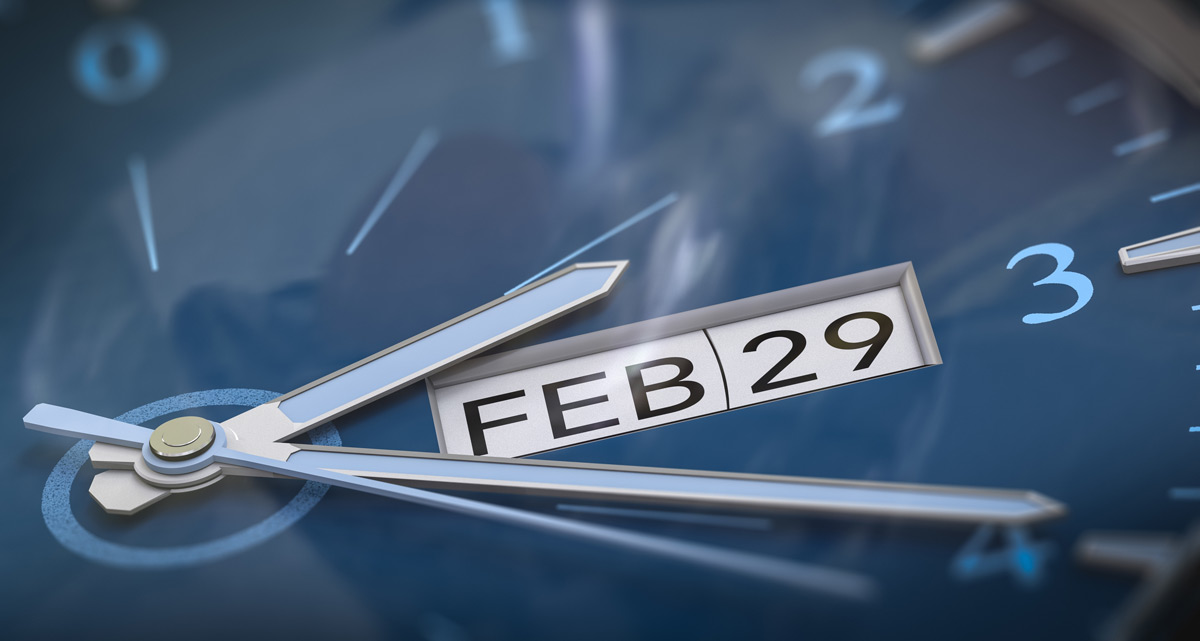
Leap years are a fascinating feat of astronomy, history and technology. If you’ve ever been curious about the ins and outs of leap years, read on to learn about their origins and importance, their impact on modern technology, and how SiTime's precision timing solutions, such as integrating leap seconds, reflect our commitment to unparalleled accuracy in timekeeping.
The Genesis of Leap Years
The origins of the leap year began with the ancient Egyptians and was later refined by Julius Caesar with the introduction of the Julian calendar in 45 BCE. This system first introduced adding an extra day every four years to reconcile the discrepancy between the calendar year and the Earth's actual orbital period around the Sun. However, the Julian calendar overcompensated, giving way to the more accurate Gregorian calendar in 1582 under Pope Gregory XIII.
A Temporal Recalibration
At its core, the concept of a leap year addresses a fundamental discrepancy between the calendar year and the Earth's orbit around the Sun. A common year consists of 365 days, but it takes the Earth approximately 365.2425 days to complete one orbit. This slight difference, if left uncorrected, would cause the calendar to drift away from the astronomical seasons, misaligning it by about one day every four years.
Leap years serve as a corrective mechanism, adding an extra day, February 29th, to the calendar every four years. This adjustment helps realign the calendar year with the Earth's orbit, ensuring that seasonal and astronomical events occur around the same time each year.
The rule for determining a leap year is more nuanced than simply adding a day every four years, however. To achieve closer alignment with the Earth's orbital period, the following criteria must be met:
- A year is a leap year if it is divisible by 4
- If the year can be evenly divided by 100, it is not a leap year, unless the year is also evenly divisible by 400
Beyond the adjustment of leap years, the concept of leap seconds further exemplifies the meticulous nature of timekeeping. Leap seconds are added or subtracted to account for variations in the Earth's rotation speed, ensuring your clocks remain in sync with astronomical time. Unlike leap years, which have a predictable pattern, leap seconds are irregular, and decided by international timekeeping authorities based on precise measurements of the Earth's rotation. This level of detail in time adjustment highlights the complexities of ensuring that human timekeeping instruments are aligned with the natural cycles of our planet.
Implications of Leap Years for Engineering and Design
The leap year phenomenon underscores the importance of precision in timekeeping in your devices and systems. The advent of new technologies, from 5G networks and automated vehicles to the use of AI to process massive amounts of data will place even higher demands on the accuracy and reliability of timekeeping systems. From GPS satellites that navigate you through the world's cities to the data centers that form the backbone of the internet, accurate timekeeping is foundational. SiTime's cutting-edge timing solutions, for example, must account for leap seconds and leap years to ensure synchronization across global networks and systems.
Moreover, the leap year adjustment highlights the need for adaptable and intelligent systems capable of automatically incorporating temporal anomalies. It's a reminder of the continuous interplay between technological advancements and the natural world's constants. As we delve deeper into AI, the quantum realm and push the boundaries of space exploration, the precision of timekeeping mechanisms becomes ever more crucial. SiTime's role here extends beyond traditional expectations, driving innovations that anticipate the future need for precision timing.
In the future, the importance of precision timing will only escalate. This relentless pursuit of accuracy not only ensures the smooth operation of current technologies but also lays the groundwork for future advancements.
SiTime's technologies play a crucial role in these domains and enable the precision timing products that modern systems require to function reliably and efficiently. The leap year, with its blend of historical curiosity and practical necessity, symbolizes the broader challenge of mastering time, and that this work has only just begun.